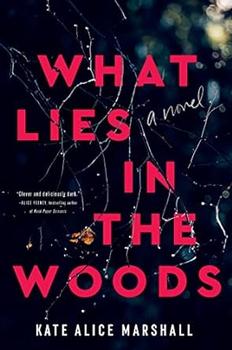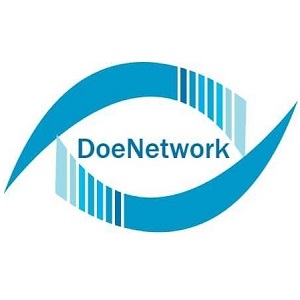Summary | Excerpt | Reading Guide | Reviews | Beyond the Book | Read-Alikes | Genres & Themes | Author Bio

A Novel
by Kate Alice MarshallThis article relates to What Lies in the Woods
In Kate Alice Marshall's murder mystery What Lies in the Woods, characters use a resource called the DoeNetwork to identify a corpse.
According to the National Missing and Unidentified Persons System (NamUs), a database funded by the U.S. Department of Justice, about 600,000 people go missing in the United States each year. Most are found quickly, alive and well, but "tens of thousands remain missing for more than one year." It's also estimated that 4,400 unidentified bodies are found annually, with about a quarter of those remaining unknown after a year. As of 2022, more than 13,000 unidentified body cases remain open in the United States.
 The DoeNetwork is one of several resources people can use to help identify remains when a corpse is discovered or when someone has gone missing. The all-volunteer agency's mission is to "give the missing back their names and return the missing to their families." They hope to achieve this goal by publicizing cold cases on their web site, providing credible potential matches between missing persons and unidentified bodies, and striving to bring media attention to these cases.
The DoeNetwork is one of several resources people can use to help identify remains when a corpse is discovered or when someone has gone missing. The all-volunteer agency's mission is to "give the missing back their names and return the missing to their families." They hope to achieve this goal by publicizing cold cases on their web site, providing credible potential matches between missing persons and unidentified bodies, and striving to bring media attention to these cases.
Todd Matthews, one of the organization's early members and its current media and public relations director, calls what they do "technocriminology." An entry in the DoeNetwork generally begins with a news report on an unidentified body or a missing person. Volunteers confirm the information with local law enforcement, and then it's posted online, with more data added as it becomes available. Eventually a DoeNetwork case file may contain photos and descriptions of the body, including any tattoos or other distinguishing characteristics, pictures of the clothing the person was wearing or items found with the individual, artist renderings of what they may have looked like, and what is known about the person's death. Volunteers also compile information from newspaper articles, family members, and police agency web sites. Similar information is entered into a different database for those who are missing. The data is then available for anyone to search. The site emphasizes that it's not run by private detectives; they don't solve crimes, they simply put the data out there so others can connect the dots.
Although the DoeNetwork is used by detectives and by individuals looking for a specific missing person, often those who spend the most time on the site are the hundreds of volunteers who simply have an interest in resolving cold cases. Some essentially work full-time trying to pair missing person reports with unidentified bodies. If a volunteer suspects they've found a match, they post the information to the website's online forum. The group puts the data through a vetting process to ensure there is, indeed, a match, and then they contact local authorities with their findings.
Volunteer groups such as these are considered a real help to understaffed police departments, and the DoeNetwork in particular has an excellent reputation because of its strict vetting process. Since its launch in 1999, the group has led to the identification of well over 100 individuals.
Filed under Medicine, Science and Tech
![]() This "beyond the book article" relates to What Lies in the Woods. It originally ran in February 2023 and has been updated for the
January 2024 paperback edition.
Go to magazine.
This "beyond the book article" relates to What Lies in the Woods. It originally ran in February 2023 and has been updated for the
January 2024 paperback edition.
Go to magazine.
Your guide toexceptional books
BookBrowse seeks out and recommends the best in contemporary fiction and nonfiction—books that not only engage and entertain but also deepen our understanding of ourselves and the world around us.